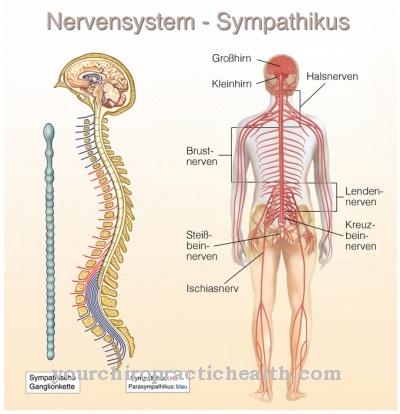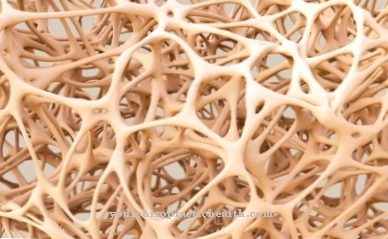In the Vigilance it is an undirected, permanent one alertnessthat can take different forms. Clinical symptoms and syndromes that manifest themselves in the form of greatly reduced vigilance are called quantitative disorders of consciousness and occur in the context of numerous neurological, psychological and other diseases.
What is vigilance?

The neurosciences define vigilance as a form of attention that is part of neural information processing. Vigilance describes the activation state of the nervous system and is not categorically either present or absent, but differently pronounced.
Vigilance is different from other forms of attention because it is tonic, i.e. it lasts permanently and does not only occur in short phases. In addition, vigilance is always undirected.
In the context of physical and mental illnesses, a greatly reduced vigilance can manifest as somnolence, sopor or coma, among other things.
Function & task
A healthy person who does not concentrate on any specific work is in a conscious state of readiness: specific stimuli can attract the person's attention, sudden dangers trigger an alarm state and, in general, the consciousness is open to the various senses.
When the person relaxes consciously, he or she enters a conscious state of rest and possibly one of the various stages of sleep. A sleep laboratory can determine and record sleep vigilance; Especially in the EEG, diagnosticians can recognize how strong the tonic undirected activation of a person is.
Vigilance is subject to natural fluctuations over the course of a day, which can vary from person to person. The cognitive neurosciences also refer to such cycles as circadian rhythms; they are subject to the biological or molecular clock and are based on biochemical interactions that are genetically determined: an individual does not learn these cycles, but rather follows them intuitively.
Usually, the neural activation reaches its peak in the course of the morning: Doctors and psychologists often carry out cognitive function tests during this period in order to be able to assess the performance of a person and to rule out disruptive factors caused by fluctuations in vigilance depending on the time of day.
In addition, the vigilance also varies within the framework of shorter cycles, so-called ultradian rhythms. This also includes the Basic Rest-Activity Cycle, BRAC for short. One run of the BRAC takes about 90 minutes and is characterized by different forms of vigilance, which are repeated at the end of this process.
The ascending reticular activation system (ARAS) represents that part of the nervous system that is responsible, among other things, for controlling vigilance. The ARAS has a far-reaching influence on the human body: The vigilance not only influences the neuronal information processing, but also affects the endocrine system and other areas of the organism.
You can find your medication here
➔ Medicines against impaired consciousness and memory problemsIllnesses & ailments
Disorders of vigilance in particular are referred to in psychiatry as quantitative disorders of consciousness, decreased or clouded consciousness. In contrast, in the case of qualitative disturbances of consciousness or shifts in consciousness, vigilance is maintained. Quantitative disorders of consciousness can u. a. indicate impairment of brain function, possibly due to organic, toxicological or psychological causes.
Medicine divides quantitative disturbances of consciousness into different degrees of severity, with somnolence, sopor, precoma and coma being among the most important. Somnolence is characterized by clinically meaningful drowsiness and goes beyond the level of normal fatigue. It can occur, for example, in the context of delirium with alcohol withdrawal, acute intoxication (for example with psychotropic drugs). Somnolent people appear and feel sleepy and give outsiders the impression of mental absence. However, they can be woken up, show (possibly limited) reactions to external stimuli and their reflexes are usually still present. In the case of somnolence, intensive care, inpatient treatment is often necessary.
The same applies to the sopor. This term refers to the Latin word for “sleep”, but also describes a clinically relevant condition in the sense of a quantitative disturbance of consciousness. People in Sopor are not only sleepy, they are also unconscious and appear asleep. Common means such as shaking the shoulders, speaking out loud and similar measures, however, often cannot awaken those affected. As a rule, a strong pain stimulus or a similarly strong signal is necessary to trigger a reaction.
The coma is the strongest form of clouding of consciousness, since in this state there is no longer any wakefulness: those affected seem to be asleep, but cannot be woken up and cannot be addressed. In addition, they no longer react to external stimuli and often show no or only reduced reflexes. Close medical supervision in an intensive care unit is necessary in the case of a coma.
People who suffer from epilepsy also experience a decrease in vigilance during a seizure, which the cognitive neurosciences sometimes call epileptic changes in consciousness. This form of vigilance disorder is temporary and usually subsides after the seizure. In some cases, complications lead to prolonged restrictions on undirected tonic attention.
Anesthesia, for example in connection with an operation, describes an artificial reduction in vigilance brought about by medication.
























.jpg)



